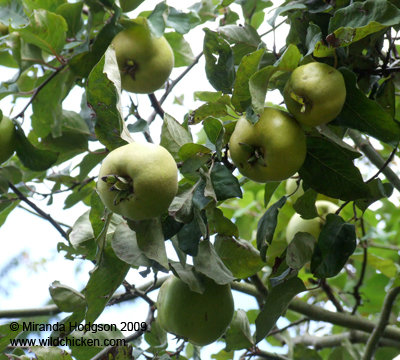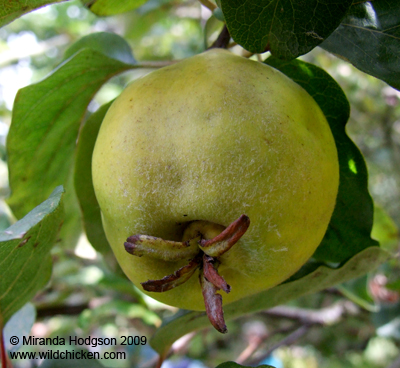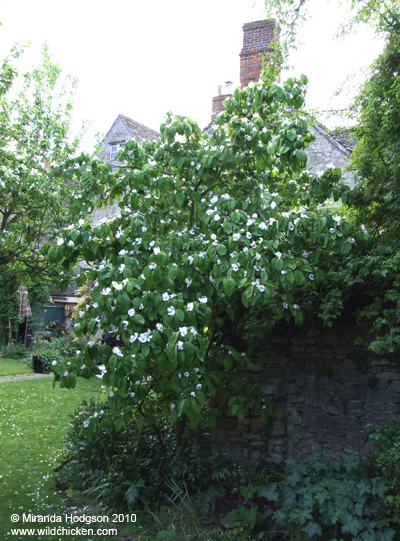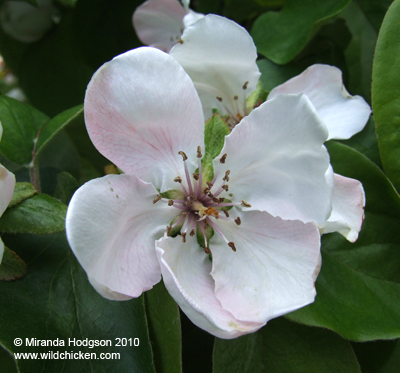





Cydonia oblonga (also called Quince)
Cydonia
oblonga
The one remaining species of the genus Cydonia (the others have been moved to different genera), Cydonia oblonga is a spreading deciduous tree grown for its edible fruit, which are borne in summer and autumn. Fairly hardy and undemanding, but flowers and fruit may need protection from hard frosts early or late in the year. The fruit needs a long season to fully ripen; in warm areas it can be grown as a free standing tree, but in colder areas it is best trained against a south- or west-facing wall. This is not a tree of great beauty but is well worth growing for the edible fruit it bears.
The fruit is too hard to eat raw but once cooked, it becomes sweeter with a unique perfume and is used in pies, jams and jellies. A single fruit is said to be sufficient to perfume a room.
Cydonia oblonga is the 'official' quince; another plant also known as a quince is a shrub called the Japanese quince, Chaenomeles, which also has edible fruit. The trees are often used as a dwarfing root-stock for pears. There are numerous named cultivars.
The flowers of the quince are self-fertile and attract bees.
Green foliage in summer and autumn, edible fruit in late summer and autumn.
Habit - upright to spreading. Fully grown free-standing trees gain a height and spread of up to 5m.
Stem - round, brown, rough but not creviced or peeling.
Leaves - green, oval or elliptical, smooth-edged, felted undersides.
Flowers - pink to white, up to 5cm across solitary on the ends of the twigs, borne in early summer.
Fruit - varying shapes, from round like an apple, to squarish, to pear-shaped. The colour is golden-green and the fruits have a light downy-felt covering. Fruit is borne on the tips of the previous year's growth and on spurs.
Sheltered, sunny. In cooler areas, train against a west or south-facing wall.
Fertile and well-drained. Avoid very alkaline soil, which can cause chlorosis.
Hardy, but see notes on 'aspect' above.
If grown against a wall, prune and train while the plant is dormant, in frost-free weather between late autumn and early spring, to create a branching framework. The main pruning needs are when the plant is young and after about four years, the main needs are to removed crossing, low lying branches or crowded stems.
For free-standing trees, the treatment is similar to that of apples - prune in winter to remove crossing or overcrowded growth to give the tree an open structure, likened to the shape of an open umbrella, that allows light and air to penetrate. For renovation, remove no more than a quarter of the oldest branches per year.
Can be susceptible to fireblight, mildew and brown rot.
For species, by seed in autumn. For cultivars, by softwood cuttings in summer.